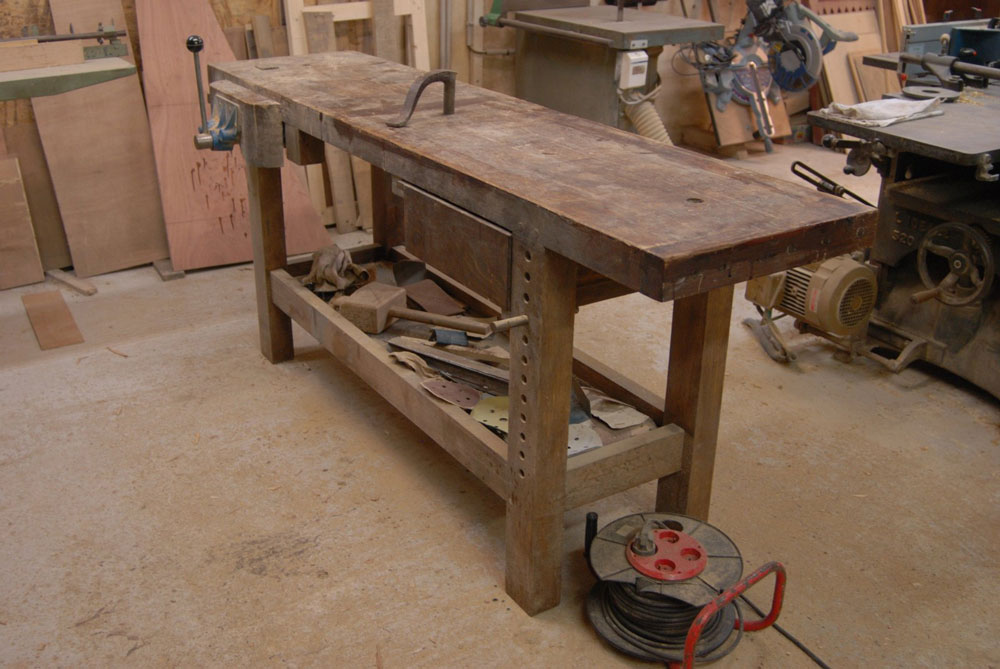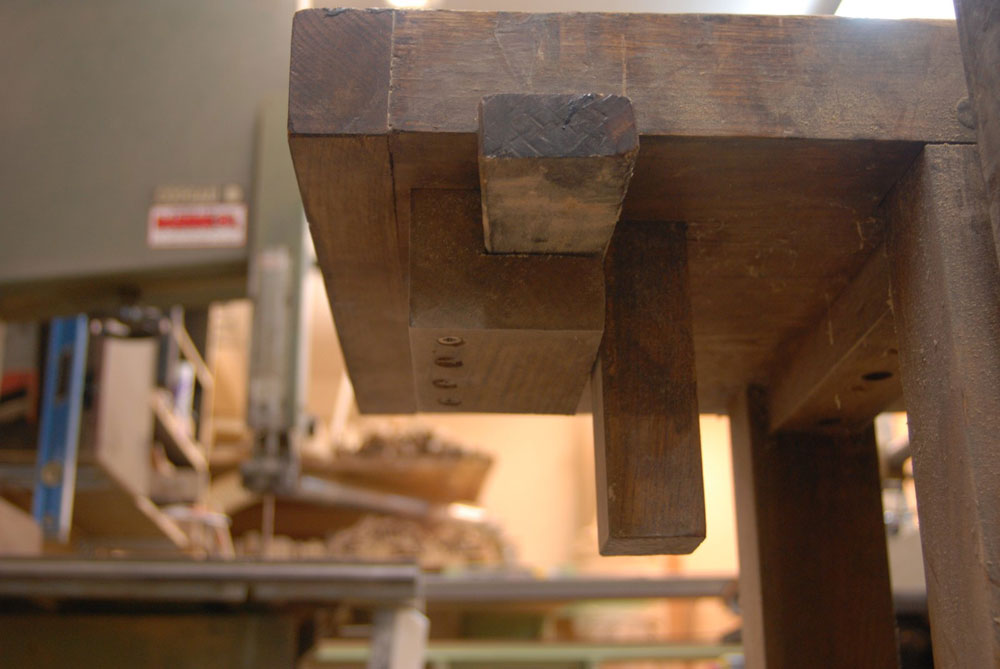We may receive a commission when you use our affiliate links. However, this does not impact our recommendations.
There are lots of ways to get around not having a sliding deadman – sometimes called a “board jack” – on your workbench. For the last 15 months I have been working on a bench without a deadman or a tail vise, so I am always looking out for novel solutions.
This weekend a woodworker named Adrian from Toronto sent me some photos of a clever bench accessory he spotted while on holiday. Adrian was in the Basque region of France and came upon this bench built by a woodworker named Herve.
The bench is a typical French model with beefy components, the legs are co-planar to the front edge of the benchtop and there is no tail vise.
What caught my eye was the planing support to the left of the face vise. It works like a horizontal planing stop. It is friction-fit and moves in and out. The tongue of the planing support helps support work from below when boards are clamped in the quick-release face vise.
While this might not seem like a big deal, if you have ever tried to clamp a long board to plane its edge without a bench slave or deadman, the board will tend to pivot like a see-saw when you start planing. Even a simple support like this can work wonders in keeping the board in place.
I cannot recall seeing this feature on any workbench before, so cheers to Herve and Adrian for bringing it to my attention.
— Christopher Schwarz
Here are some supplies and tools we find essential in our everyday work around the shop. We may receive a commission from sales referred by our links; however, we have carefully selected these products for their usefulness and quality.












Workbench Hangover?
Or would it be more appropriate to say “Overhang”?
Reading this blog with its accompanying pictures tickled my brain again as I have felt that tickle so many times before when viewing workbench pictures (especially with all the pictures in your workbench book).
What determines the practical (Meaningful? Helpful? Useful?) length of workbench top that extends beyond the support legs in any given design, on either end?
Thanks for all the help you give to so many of us!
Jim Aspin
Just a thought. Could it be, that the marks and height in relation to the vise bars be incidental? Its slot is just screwed to the underside of the bench. It looks to be an odd way to fashion a stop.
It does look however, to be a way to wedge the planing stop at a certain height (I have driven a board almost off the bench when planing stop slips below surface of benchtop) Sticks out enough to grab and loosen or tap in.
Are you sure that isn’t a planing stop instead of a planing support? It would be of much more use as a support on the other end of the bench.
That bench also looks to have a giant holdfast the twin of yours.
They say Basque planing supports live by the vendetta. If they hold up a piece of wood it’s to the death. It’s the same with the planing stop.